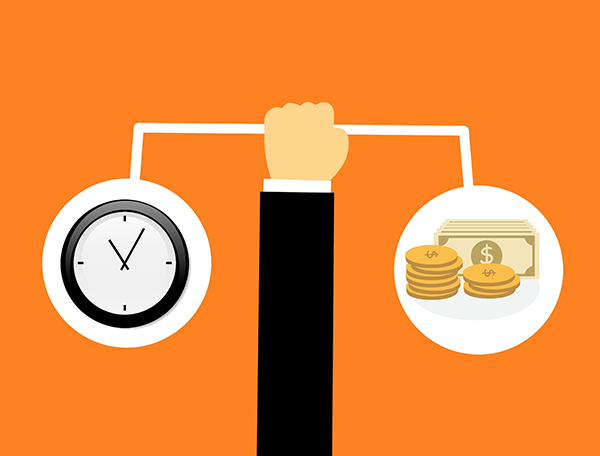The Disciplined Investor
Lump-Sum Investing vs. Dollar-Cost Averaging Round 1: Raw Returns
Our investment consultants were excited to attend the recent 2021 Minnesota Financial Planning Association annual meeting. One of the highlights of this conference was hearing the financial outlook from a panel of economists. One interesting point made in the presentation was that national personal savings rates are near all-time highs. Of course, we have heard and seen this anecdotally from our clients. Part of the reason for this may be due from the pandemic. It’s hard to spend money if you can’t go out and eat at your favorite restaurant or make purchases because of supply chain issues.
With this extra cash on hand, one question we often hear is, “should I invest cash now with the market being so high?” We think this is a great question. While our long-term market outlook is positive, we wouldn’t be surprised to see market corrections along the way. Nobody enjoys seeing the market take a dive shortly after they jump in. Unfortunately, we never know when it might do exactly that.
What’s an investor to do? Should you go ahead and invest the entire amount right away? An alternative to investing the whole amount is investing gradually, such as in 12 monthly installments.
In financial jargon, this is known as lump-sum investing (all at once) vs. dollar-cost averaging (over time). In more approachable terms, it’s often described as “plunging” vs. “wading” into the deep end of the market.
Which one should you use? In terms of raw expected returns, the academic research suggests lump-sum investing is preferred. But sometimes, there are equally valid, if less tangible reasons to favor dollar-cost averaging. In this two-part series, we’ll explore both possibilities.
Round One: Raw Returns
In a match-up against lump-sum investing vs. dollar-cost averaging, which is the better bet? Everyone from academics1 to financial practitioners,2 to the financial press3 have weighed in on the matter, and have reached a consistent conclusion:
Lump-sum investing generally improves your odds for earning higher returns compared to dollar-cost averaging.
Hypothetical example:
- Kelly invests $36,000 as a lump sum in a low-cost, total market index fund on January 1.
- Roger uses dollar-cost averaging to invest $3,000 per month for one year in the same fund, beginning on the same date.
- They both let the results ride from January 1 through the next 15 years.
Who is more likely (although not guaranteed) to come out ahead? Kelly’s lump sum approach has a better chance of generating more wealth than Roger’s dollar-cost averaging approach.
This general expectation is well-established in academia, at least as far back as a landmark study published by George Constantinides in a 1979 Journal of Financial and Qualitative Analysis. Others have expanded on the theme ever since, examining nuances4 such as:
- Do the results still hold using more current data and across various markets?
- Does the advantage disappear after accounting for risk-related returns?
- Might a hybrid strategy (blending both concepts) generate even better results?
So far, our general rule of thumb holds. Even without academic analysis, this makes sense:
- When markets rise, lump-sum investing bests dollar-cost averaging: If you invest everything up front, more of your money has more time to compound in a rising market than if you’ve dripped it in more slowly. Of course, the reverse is also true. If markets go down, your bigger, earlier stake takes a bigger hit. But …
- Overall and over time, markets go up higher and more often than they go down: For example, in this short, but powerful video,5 Dimensional Fund Advisors shows us that U.S. stock market highs and lows have varied widely in any given year. But despite setbacks along the way, the market has prevailed, and delivered a healthy 10% per year on average from 1926–2019.
- Therefore, it stands to reason: If lump-sum investing outperforms dollar-cost averaging in up markets, and markets go up more, and more often than they go down …
When the choice is available, a purely rational investor should generally prefer lump-sum investing to dollar-cost averaging.
As humans, we love to wonder whether generalities apply to us. What if you are not yet convinced a lump-sum investment makes sense for you, your personal circumstances, and the latest market conditions?
This brings us to round two of our match-up between lump-sum investing vs. dollar-cost averaging. We’ll share those results soon. The winner has yet to be declared.
References
1. Constantinides, G.M. (June, 1979). A note on the suboptimality of dollar-cost averaging as an investment policy. Journal of Financial and Quantitative Analysis,14(2), 443-450. https://faculty.chicagobooth.edu/-/media/faculty/george-constantinides/documents/jfqa_1979.pdf
2. Dimensional Fund Advisors. (August 10, 2020). Taking stock of lump-sum investing vs. dollar-cost averaging. https://www.dimensional.com/us-en/insights/taking-stock-of-lump-sum-investing-vs-dollar-cost-averaging
3. McCann, B. (June 7, 2020). Investors flock to cash. Here’s what they need to know. The Wall Street Journal. https://www.wsj.com/articles/investors-flock-to-cash-heres-what-they-need-to-know-11591540041?mod=djemMoneyBeat_us
4. Faber, N. (February 12, 2018). Should you dollar-cost average? Flirting with models. The Research Library of Newfound Research. https://blog.thinknewfound.com/2018/02/dollar-cost-average/
5. Dimensional Fund Advisors. 2020. The uncommon average. https://www.dimensional.com/us-en/insights/the-uncommon-average-data-vid

Hello! I’m Saul, a wealth advisor and financial planning specialist at Allodium Investment Consultants, located in Minneapolis, MN. I am dedicated to helping our clients reach their financial goals by specializing in investment strategies and comprehensive financial planning. When I am not advising clients, you will find me spending time with my wife, Khara, and daughter, Brielle. We live on a hobby farm, which supports my love of gardening and cooking. I have also been a downhill ski racing coach and enjoy outdoor activities, including canoeing, camping and photography.
The information provided is for educational purposes only and is not intended to be, and should not be construed as, investment, legal or tax advice. Allodium makes no warranties with regard to the information or results obtained by its use and disclaim any liability arising out of your use of or reliance on the information. It should not be construed as an offer, solicitation or recommendation to make an investment. The information is subject to change and, although based upon information that Allodium considers reliable, is not guaranteed as to accuracy or completeness. Past performance is not a guarantee or a predictor of future results of either the indices or any particular investment.
